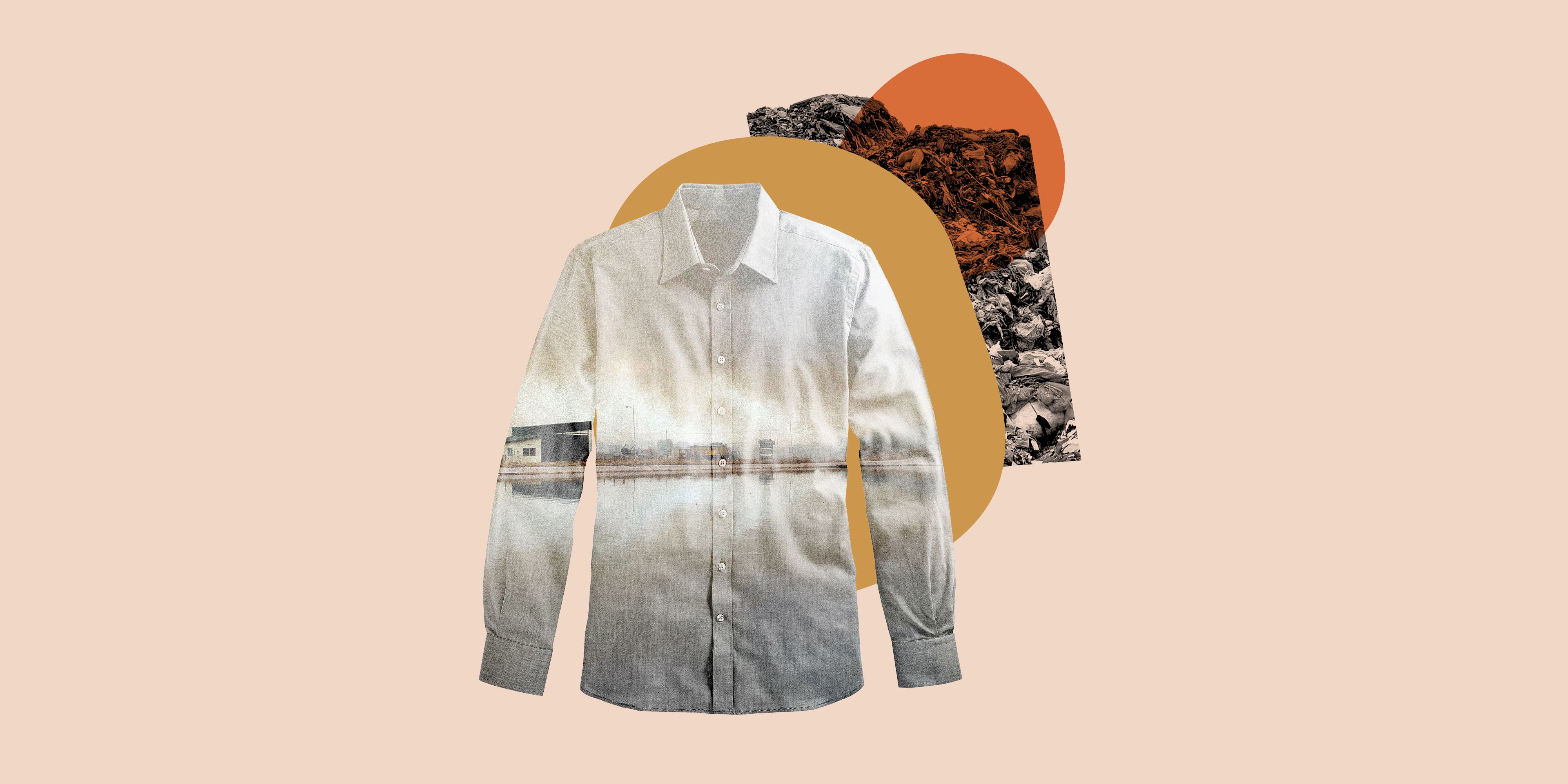Cape Town Sustainable Fashion Designers Leading the Eco-friendly Movement
Cape Town Sustainable Fashion Designers Leading the Eco-friendly Movement
Blog Article
Remain Ahead of the Curve by Exploring Cutting-edge Fashion Fads
In an industry as dynamic as fashion, remaining in advance involves more than just complying with existing fads-- it demands an expedition of innovation. Smart textiles, as an example, are transforming garments right into useful work of arts, while 3D printing is changing design processes with its adjustable, waste-reducing abilities. As sustainability comes to be a foundation, innovations like environment-friendly materials and circular fashion practices are improving ecological duty - Cape Town Sustainable Fashion. In addition, the merging of modern technology and style heralds a new period of customer interaction. Exactly how, then, can these emerging fads redefine the future of style, and what effects do they hold for brands looking for to grow in this advancing landscape?

Accepting Smart Textiles
In current years, the apparel industry has witnessed a transformative shift with the assimilation of clever fabrics, an innovative technology that mixes innovation with textile. This evolution stands for not just a blend of aesthetic appeals and capability however likewise a considerable jump towards sustainability and personalization in style. Smart fabrics, also referred to as e-textiles, installed innovative electronic devices such as sensing units and conductive strings within the textile, making it possible for garments to connect with the wearer or the setting.
These textiles are created to check physical specifications, such as heart rate or body temperature, supplying real-time health and wellness analytics. Beyond health applications, clever fabrics are also being made use of for flexible garments, which can alter shade or pattern in feedback to ecological stimuli, therefore providing a dynamic style experience.
Moreover, the development of energy-harvesting fabrics that produce power from movement or sunshine is leading the way for self-sufficient wearable modern technology. This technology is attracting eco aware customers and designers intending to lower the eco-friendly footprint of fashion. As r & d in this field advancement, wise textiles are anticipated to become increasingly common, reshaping the landscape of modern fashion with their multifunctional abilities.
The Increase of 3D Printing
Changing the production landscape, 3D printing has become a game-changer in the apparel industry. This innovative innovation has actually allowed developers to push the borders of imagination, producing intricate and tailored garments that were previously inconceivable. By leveraging digital style and additive production, 3D printing helps with the production of complicated geometries and patterns, allowing designers to trying out new structures and frameworks.
A notable advantage of 3D printing in vogue is its capacity to produce on-demand, lessening waste and lowering inventory requirements. This effectiveness not just optimizes production processes however likewise permits for rapid prototyping, allowing designers to bring their visions to life in a much shorter duration. In addition, 3D printing sustains customization somewhat unrivaled by standard approaches, offering special layouts and personalized fits tailored to individual consumer preferences.
The rise of 3D printing has also democratized fashion, making it available to arising developers that can currently make high-quality items without considerable financial investment in standard manufacturing infrastructure. As modern technology continues to development, the fashion business is poised to harness the complete potential of 3D printing, checking out brand-new materials and strategies that will unquestionably redefine just how fashion is developed and produced.
Lasting Fashion Developments
As the garment industry faces journalism requirement click to find out more for ecological responsibility, sustainable fashion technologies have actually emerged at the center of transformative change. The expanding understanding of eco-friendly impact has fueled a shift in the direction of more eco-conscious practices and materials. Brand names and developers are now prioritizing sustainability, integrating methods that decrease waste and reduce carbon footprints.
One considerable advancement is the rise of circular fashion, which emphasizes recycling and upcycling to expand the lifecycle of garments. This approach not only lowers waste however likewise urges customers to embrace a much more conscious technique to garments intake.
An additional innovation exists in the adoption of cutting-edge dyeing strategies that use waterless procedures or all-natural dyes, thereby lowering the huge amounts of water and chemicals typically used in fabric dyeing. Moreover, advancements in biotechnology have actually brought about the production of lab-grown leather and textiles, supplying ecologically friendly and cruelty-free alternatives to traditional materials. With these introducing initiatives, the garment industry is making purposeful strides in the direction of a much more lasting future.

Tech-Integrated Apparel
Tech-integrated clothing stands for a groundbreaking fusion of style and innovation, reshaping how people engage with their clothes. This ingenious domain is noted by the inclusion of wise fabrics and embedded electronic elements, boosting both functionality and visual appeal. From physical fitness trackers installed in sports apparel to warmed coats controlled by means of smartphone applications, tech-integrated apparel supplies consumers unmatched ease and adaptability.
Introducing brands are driving this trend, focusing on developing garments that respond to ecological stimuli or user commands. For instance, some garments can change shade or pattern in feedback to temperature level changes, while others integrate biometric sensing units to keep an eye on wellness metrics like heart rate or anxiety levels. The smooth assimilation of technology right into fabrics likewise extends to environmental sustainability, with efforts to establish self-cleaning textiles or garments that readjust to climate condition, thus minimizing the requirement for multiple layers.
Furthermore, the development of wearable modern technology is not simply restricted to apparel yet expands to accessories like watches and eyeglasses, additional expanding the extent of tech-integrated fashion. As the Visit This Link market proceeds to introduce, the possibility for modification and customization in apparel grows, supplying consumers unique, tech-enhanced style experiences that accommodate their private demands and preferences.
Future of Virtual Fashion
Over the last few years, the future of online fashion has actually arised as a transformative force within the sector, leveraging advancements in electronic modern technology to redefine how style is developed, experienced, and eaten. By integrating augmented reality (AR), digital reality (VR), and 3D style devices, developers can now craft interactive and immersive experiences that go beyond conventional style boundaries. Virtual style enables the production of garments that exist solely in digital settings, using unlimited opportunities for advancement without the restrictions of physical production.
This digital change not just presents chances for creative recommended you read expression yet additionally addresses sustainability concerns inherent in standard fashion methods. Cape Town Sustainable Fashion. By getting rid of the requirement for physical resources, digital style reduces waste and lessens carbon footprints. Moreover, the rise of online style straightens with the increasing consumer need for special and individualized experiences, as online garments can be tailored and tailored to specific preferences with simplicity

Verdict
The style industry's future lies in the combination of innovative technologies and sustainable methods. Virtual fashion is poised to redefine consumer communications.
In current years, the style industry has witnessed a transformative change with the integration of smart fabrics, a sophisticated technology that mixes technology with material.As the style industry grapples with the pushing need for ecological obligation, lasting style technologies have actually arised at the center of transformative modification.In recent years, the future of digital style has actually emerged as a transformative pressure within the sector, leveraging improvements in digital modern technology to redefine just how fashion is created, experienced, and eaten. The surge of digital fashion aligns with the enhancing consumer need for tailored and special experiences, as digital garments can be personalized and tailored to specific choices with simplicity.
The style market's future lies in the assimilation of lasting methods and innovative modern technologies.
Report this page